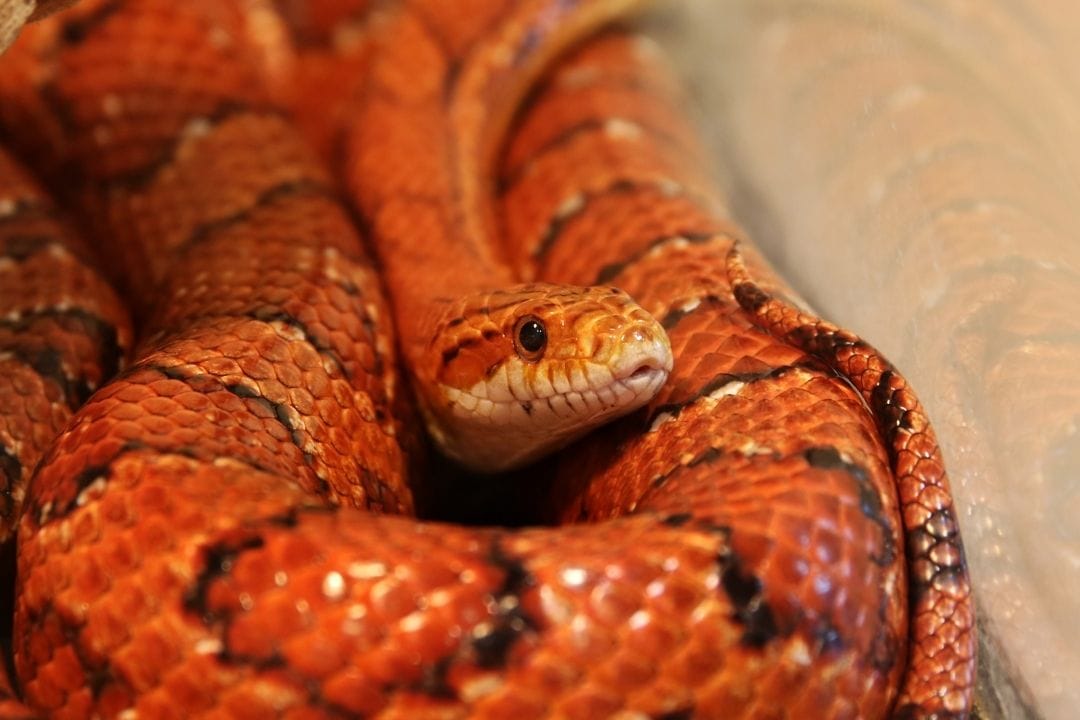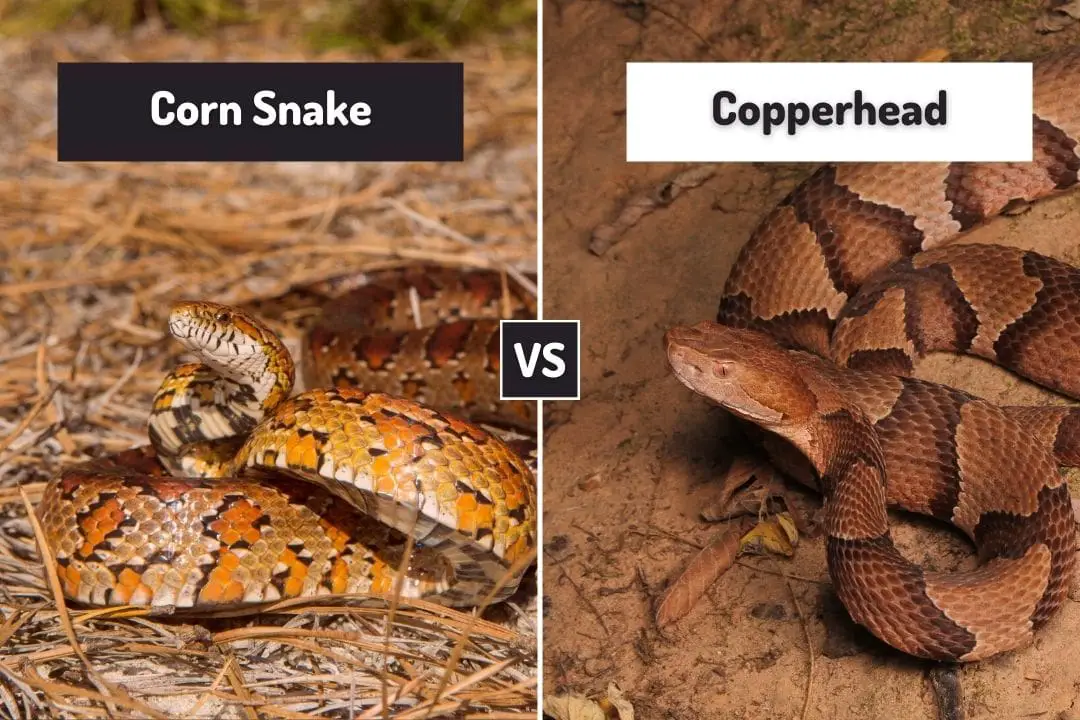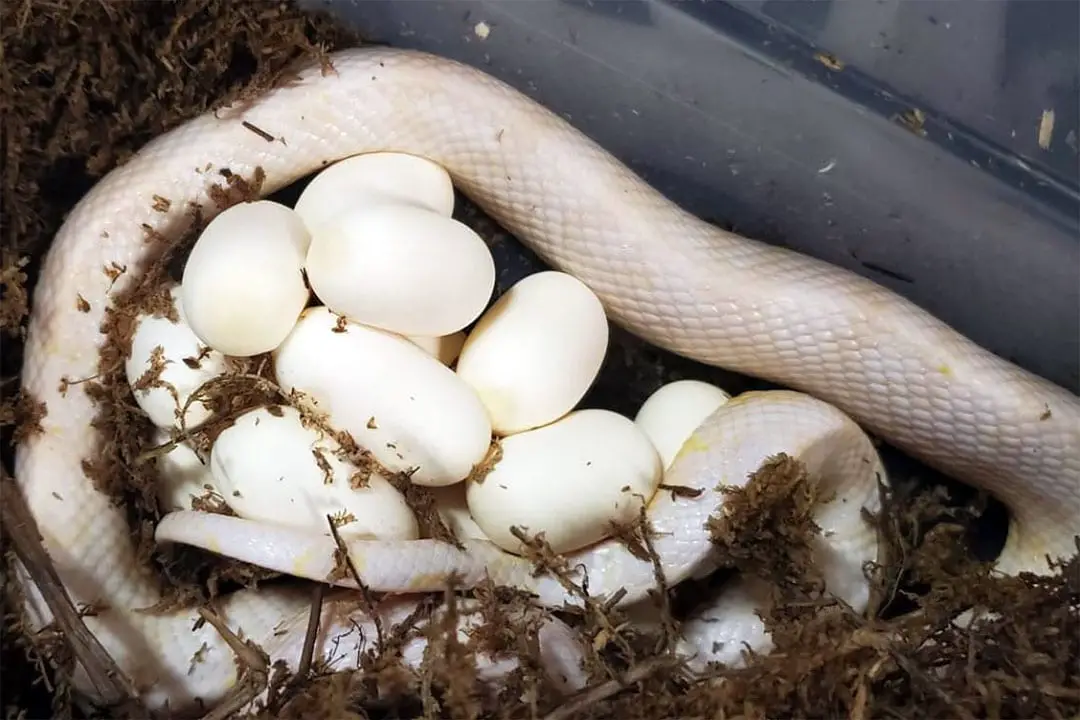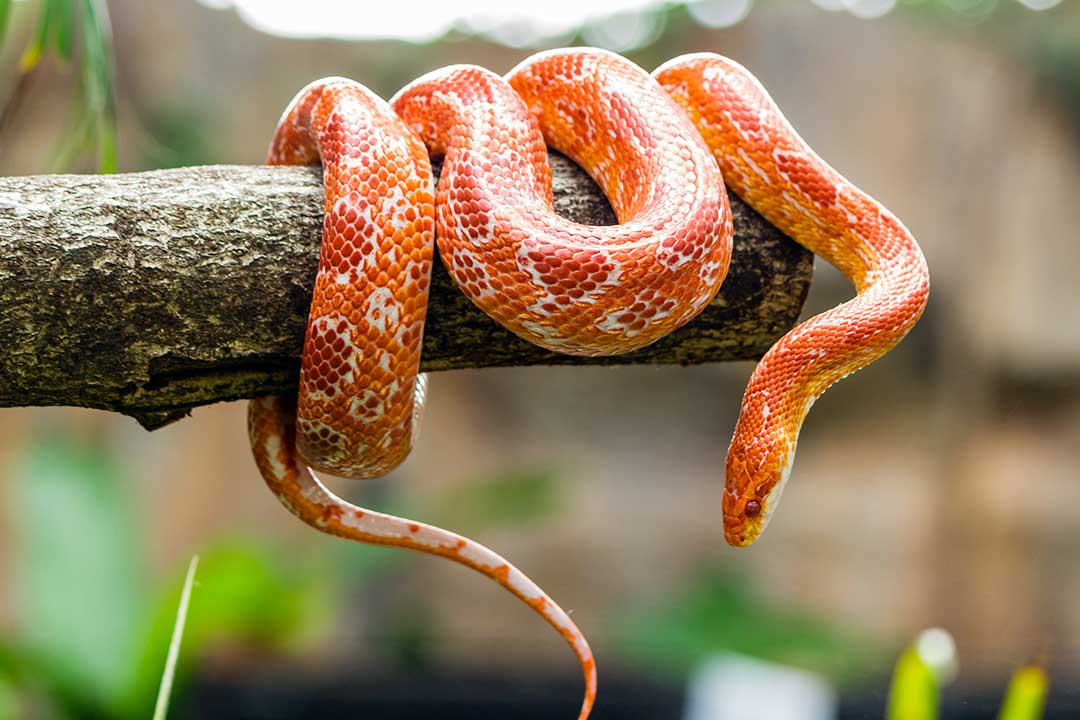If you are considering a pet corn snake, you are likely wondering how large your snake will get. Corn snakes are generally not large snakes, and stay fairly slim compared to their length throughout their lives.
Son how big does a corn snake get?
An adult corn snake will measure between 24 and 72 inches long. They typically reaches their full size by 2 years of age, though they live for 15-20 years on average.
How Big Will My Snake Get?
In the wild, the size of an adult snake varies depending on how well they are finding food.
The Smithsonian has a good fact sheet to learn more about the species. In captivity, some factors can affect their growth, mainly surrounding the care and habitat size.
So long as you provide proper care and food, your snake will likely end up on the larger size, though it depends on genetics as well. If you got your snake from a breeder, ask how large the parents are so you have an idea.
Everything you need to know about caring for Corn Snakes in captivity:
Read our Corn Snake Care Sheet (Complete 101 Guide)
What Factors Can Affect Size?
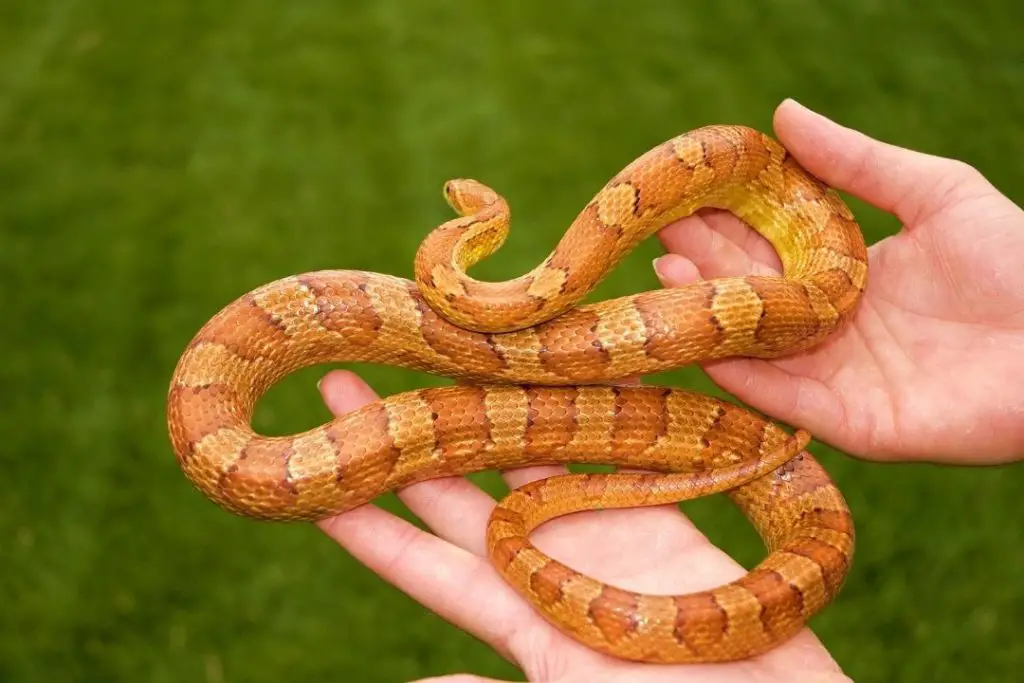
The amount of food provided and the quality is one of the biggest growth factors. If you don’t provide enough food, or the mice you feed were malnourished, your snake will be malnourished.
This means they will grow more slowly or even pause. Poor temperatures and humidity can also affect growth. If you overfeed your snake, they may grow a bit longer but may be overweight. A small tank can also stunt growth.
Your snake needs to be in a tank that is at least 20 gallons. Your snake should be able to stretch out to its full length. You should try to get the largest aquarium you can fit since the extra length will give your snake more room to move around.
Proper Feeding
The first step in making sure your snake will have healthy growth is getting the right food. You should pick frozen and thawed mice from a good supplier. Make sure the mice you select were given a good diet during their life and didn’t have parasites that could be passed to your snake.
The size of the mouse is also important. It should be no larger than the widest part of your snake. Hatchlings need to be fed at least once a week. You should watch for signs of hunger or if they need more time to digest their meals.
Juveniles get fed about every 10 days, and adult snakes will be fed every 2 weeks depending on their appetite.
You can offer rats, but they are a bit more nutritious and may make your snake too fat if fed too often.
Since corn snakes have a wide diet in the wild, this can be good enrichment. If your snake is eating enough, it should gain weight steadily while young and maintain it as an adult.
A kitchen scale is perfect for weighing even an adult corn snake since they typically weigh no more than 900 grams (2 pounds) as an adult.
Make sure you offer water in a large bowl that your snake can’t tip over, but is large enough for the snake to fit if it wants to soak. Your snake should always have access to clean water.
Body Condition
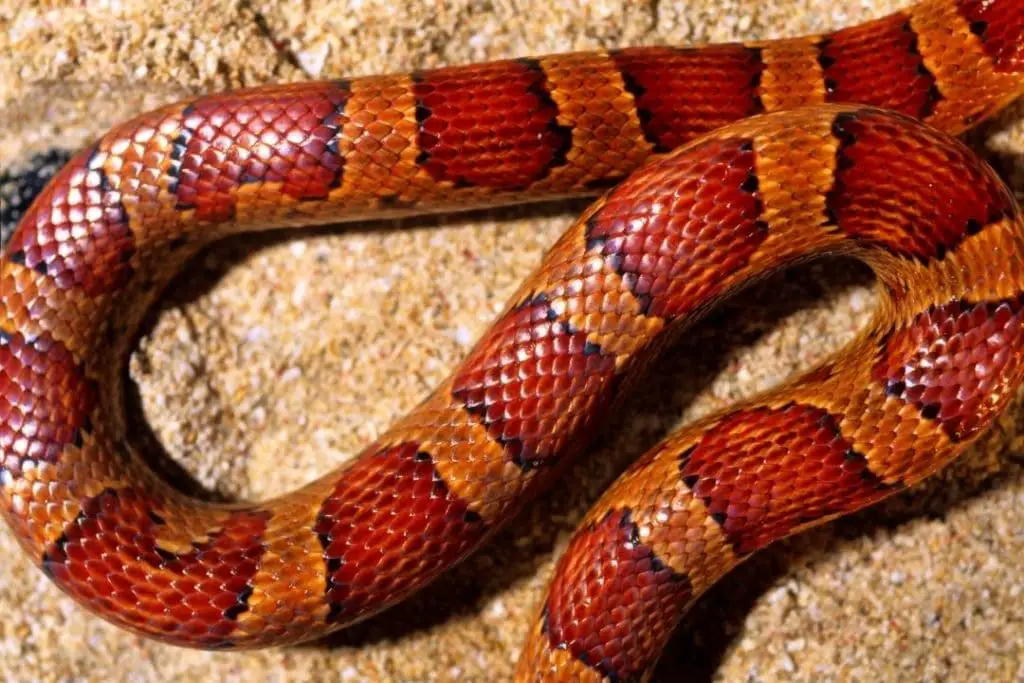
Body condition is how you tell if your snake is healthy and at a good weight for its size. Make sure to examine body condition after your snake has fully digested its last meal. The ideal body shape for a corn snake is like a loaf of bread.
Their belly should be flat, with the top rounded. You shouldn’t be able to see the skin between the scales if the snake is healthy. The spine should be felt if you palpate its back, but it shouldn’t be too prominent.
The ribs shouldn’t be easily felt, and the skin should be smooth.
You shouldn’t see any protruding bones or skin folds, since this means your snake is too thin. Your vet can tell if your snake has the right body condition.
This article also goes over body conditions in corn snakes.
Habitat Requirements
Your snake’s habitat is the other big factor in its final size. A small tank may restrict growth. It may also stress out your snake. The minimum tank size is a 20-gallon aquarium.
You will want one that offers more length over height since some corn snakes like stretching out after a meal. The tank should be large enough on the diagonal for the snake to stretch out fully.
If you can fit a larger tank, go with that. It also gives your snake more options for thermoregulation.
One side of your snake’s tank should be at 85 degrees, and the other should be at around 75 degrees. There should be hide options on each side so your snake doesn’t need to pick between feeling secure and being at the right temperature. If you use particulate bedding, this can help since corn snakes enjoy burrowing.
Allowing your snake to exhibit natural behaviors will make for a happier snake that should grow better. Since corn snakes climb, you should add a few branches so they can do so. You also need to keep the habitat at 40-50% humidity. This allows for healthy sheds. Your snake needs to shed properly to keep growing. A stuck shed can stunt growth and cause injuries and stress.
Size Difference Based on Sex
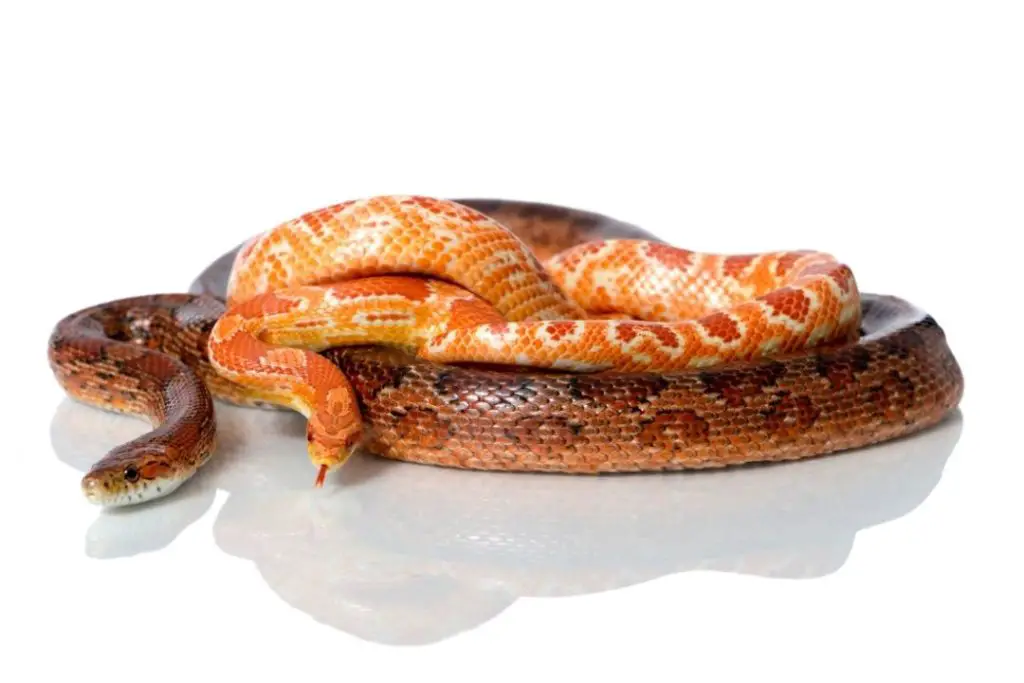
It is very difficult to tell a corn snake’s sex before the age of 6 months. Females seem to put on weight a bit faster, but this varies depending on the individual.
At adult sizes, males will typically be a bit larger than a female. This isn’t reliable enough to be sued to identify sex, so you should take your snake to a professional if you want to know for certain.
If you don’t intend to breed your snake, it isn’t something you need to concern yourself with too much. If you are, make sure you have your snake sexed with the probe method and commit to proper care.
If your snake is bred without making sure it is strong enough, you may harm its health. Generally, corn snakes can’t breed until they reach full size.
Other Factors
Corn snakes tend to grow at a steady rate, with their largest amount of growth being in the first year of life. So long as your snake is healthy for the first 2 years of its life, it should grow well.
Make sure to watch out for signs of illness, parasites, and infections so you can catch these quickly. You also shouldn’t overfeed your snake if you want it to be longer. Feeding too often or with pretty items that are too large can stress your snake.
In Conclusion
Corn snakes are not particularly large snakes. They are generally a slender snake that is easy to handle and doesn’t get so large that it is hard to keep. We hope this helps you know what to expect before your commit to keeping a corn snake. If you have any questions or comments, please leave them below.
